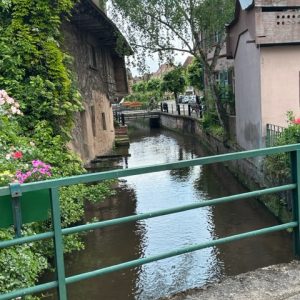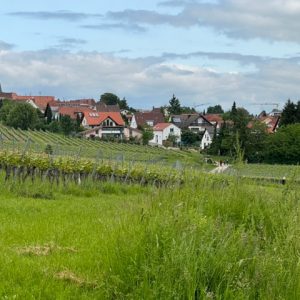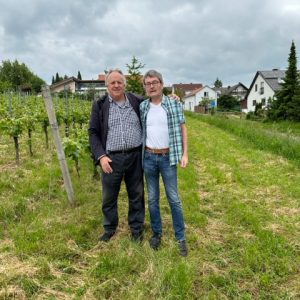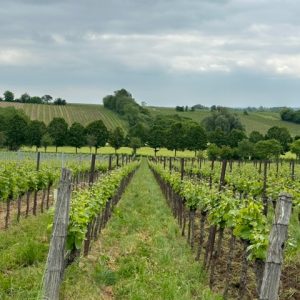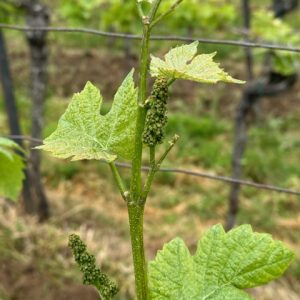Schweigen, Germany
Wissembourg is one of the prettiest villages in Alsace. It is situated on the little river Lauter close to the border between France and Germany approximately 60 km north of Strasbourg.
Like all of Alsace, Wissembourg has had a troubled history. It was annexed by France after 1648. Then incorporated into Germany in 1871. It was returned to France in 1919, but reincorporated back into Germany in 1940. After 1944 it again became French.
Based on my Internet research, I understood that Wissembourg was another Alsatian wine town. Railway staff pointed me in the direction of vineyards, which were on the edge of town. The vineyards are coming alive with viticulteurs ploughing, and small grapes forming.
As I was wandering through the vineyards, I stumbled across a German couple who informed me that I had just crossed into Germany (see photo where one of my new friends and I were standing on the border). With the establishment of the Schengen Area, there are no longer any border signs.
Since I had unwittingly entered Germany, I went for a walk around the neighbouring German village of Schweigen. Nice enough, but everything was closed. I had a few chats with the locals who were friendly.
One thing that was striking was that no-one on the German side of the border spoke French, and vice-versa. As a great believer in the European project, I was greatly disappointed.
Europe is all about living together in peace, and communication skills and cross-cultural knowledge are key to that. But neither government seems to be making much effort.
The other curiosity was that virtually all the vineyards belonged to the German side of the border. Indeed, Schweigen (Schweigen-Rechtenbach in full) is the southernmost wine-growing village in the German region of Pfalz. Schweigen’s most prized vineyard, the Sonnenberg, actually crosses the border.
This creates the unusual situation that a handful of Germany’s top wines are technically grown in France. This works both ways: some wine from the Sonnenberg site is used to make ‘French’ Crémant d’Alsace. The Pinot Noir from this site is reportedly powerful in a style which is steadily attracting global attention from Pinot fans.
The key grape varieties grown in and around Schweigen show how close the village is to Alsace. Vineyards here do not specialise in Riesling and Spätburgunder (Pinot Noir) to the extent of many Pfalz villages.
They also grow Grauburgunder (Pinot Gris), Weissburgunder (Pinot Blanc), Gewurztraminer, Silvaner and Muscat. These are precisely the seven grape varieties around which Alsace’s wine industry revolves.
I was informed by a young lady at the Caves Cooperative de Wissembourg that in fact the most northerly vineyard in France is the nearby village of Cleebourg. So I have another wine walking project.
